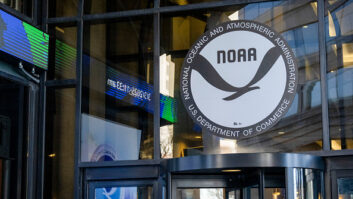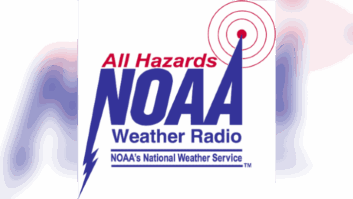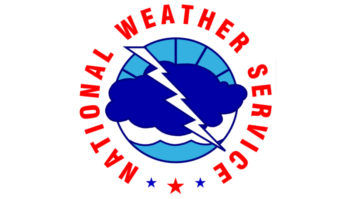In these letters to the editor, the authors respond to the story “NOAA Weather Radios Have a Crucial Role to Play.” Radio World welcomes letters to the editor on this or any story. Email [email protected].
Don’t Overcomplicate It
Thank you, Ms. Abbott, for your support of NOAA Weather Radio (NWR).
Fifty years ago, President Gerald Ford designated NWR “America’s Official Federal Warning System,” a title it still holds. Because the system is paid for and operated by the federal government, it costs county emergency managers nothing to utilize it.
Every emergency manager should push NWR on the county EMA website. Kerr County, Texas, is considering spending millions on outdoor sirens when NWR transmitter WWF90 sits right in Kerrville and broadcasts throughout the county.
If Kerr County would encourage citizens to use weather radios in every home, school, business, camp and RV park, they could alert everyone at zero added cost for the county, saving taxpayer dollars. Alas, Kerr County EMA has no mention of “America’s Official Federal Warning System” anywhere on their website.
As the lowest cost and most effective alerting system, NOAA Weather Radio should be prominently highlighted on every county EMA page in the country.
— Bruce Jones, meteorologist/national spokesperson, Midland Radio Corporation
Unanswered Questions
It was with great emotion and sadness that I learned of the recent tragedy in Texas. The question on many people’s minds is: “But how is this possible?”
Did the warning systems not work properly? Did the NOAA network not play its role to the full? Were the residents of the Guadalupe Valley equipped to receive the warning messages? If the NOAA network’s VHF signals were difficult to pick up, could AM or FM radios have played a role?
In addition to my questions, I’d like to draw your attention to the video “NOAA Weather Radios (with S.A.M.E.) Can Save Your Life! Here’s the Best One for the Money.”
Of course, the advice given by Dan — well-known to radio listeners for his receiver tests, among other things — is only valid for your country [U.S.]. However, I’ll take his advice: “Don’t rely on your smartphone alone!” … And yet that’s what’s happening in France and Europe in general.
Warning systems rely on telephone networks [Cell broadcast 4G/5G] and FM/DAB+ radio, not to mention the aging network of sirens which only give a general warning without any precision.
AM radio has virtually disappeared everywhere in Western Europe, removing an historic layer of security. Following a power cut in Spain on April 28, it took several hours before AM radio was operational again! In Madrid, the shops selling rare battery-powered radios were quickly sold out.
I asked ChatGPT for a comparative table of the situation in Europe (to be checked with a careful eye!). Here is the comparative table in English, summarizing the main public alert systems in Europe (France, Germany, Spain, Italy, UK, etc.) with details on technical means, networks used and national specifics:
|
Country |
Main Alert System |
Networks Used |
AM Radio |
FM/DAB+ Radio |
Sirens |
Key Features |
| France | FR-Alert (since 2022) | Cell Broadcast (4G/5G), FM/DAB+, sirens | discontinued | no automatic radio takeover | SAIP network | No automatic radio override; strong dependence on digital networks. |
| Germany | Cell Broadcast (since 2023), NINA app | Cell Broadcast, FM/DAB+, sirens | discontinued | DAB+ with Early Warning Function (EWF) | extensive | DAB+ used for automatic emergency break-ins (EWF). |
| Spain | ES-Alert (since 2023) | Cell Broadcast, FM, local sirens | discontinued | no EWF standard | partial | No centralized radio override; Cell Broadcast recently deployed. |
| Italy | IT-Alert (fully deployed 2024) | Cell Broadcast, FM, patchy siren network | discontinued | DAB+ not widespread | very limited | IT-Alert relies mainly on Cell Broadcast; limited siren coverage. |
| United Kingdom | Emergency Alerts (since 2023) | Cell Broadcast (4G/5G), FM/DAB+, few sirens | discontinued | no national radio override | declining | Mainly mobile alerts; few sirens left; no emergency radio priority. |
| Netherlands | NL-Alert (since 2012) | Cell Broadcast, FM/DAB+, sirens | discontinued | no automatic interruption | present | Early adopter of Cell Broadcast; no automatic radio alerts. |
| Poland | RCB Alert (Cell Broadcast), sirens | Cell Broadcast, FM/DAB+, widespread sirens | discontinued | no official EWF | extensive | Sirens cover 98% of the country; regular nationwide siren tests. |
The key takeaways:
- DAB+ Early Warning Function (EWF) is properly deployed only in Germany, with automatic program interruption.
- AM radio has been almost entirely phased out across Western Europe, removing a key wide-area emergency channel.
- Cell broadcast is becoming standard across Europe, after the EU directive (EECC) mandated effective mobile alert systems.
- France and the UK are among the most vulnerable in case of widespread electrical failure, due to lack of prioritized radio or large-scale siren networks.
- Germany offers the most redundant system, combining cell broadcast, DAB+ EWF and an extensive siren network.
Radio World has already devoted articles to the essential role of radio in emergency situations (California fires, Hurricane Helene, etc.) but I don’t think the decision-makers are among your readers and that’s a shame.
– Paul Jamet, France
[Check Out More Letters at Radio World’s Reader’s Forum Section]






